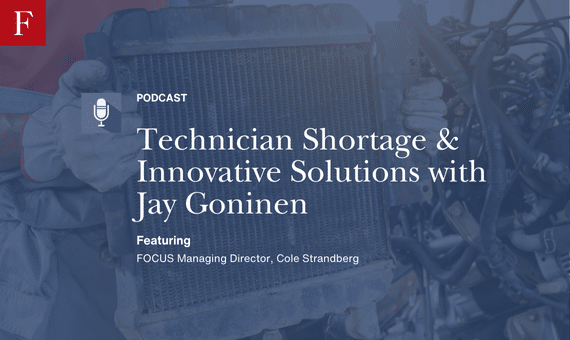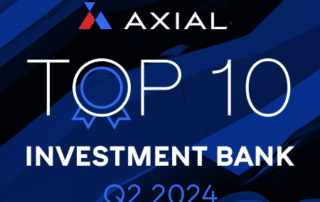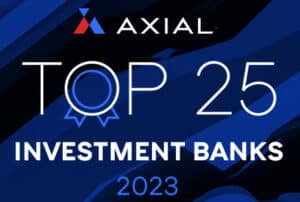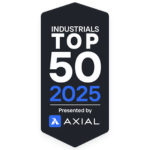
Technician Shortage & Innovative Solutions with Jay Goninen
In this episode of the Collision Vision driven by Auto Body News, we’re tackling one of the most pressing challenges in the collision repair industry: the technician shortage. We’re joined by Jay Goninen, Co-Founder and President of WrenchWay, and owner of his family’s longtime repair shop. We explore the root causes of the technician shortage, highlight innovative solutions to bridge the skills gap, and discuss how shop owners can recruit, train, and retain top talent in an increasingly competitive market.
Jay Goninen: Every time I get to talk to you, we have a lot of fun. We were able to meet in Vegas at Seema, had great conversation there. And I think what I love is it’s always, there’s always depth to to the conversation. It’s not maybe just always work stuff where we’re talking different sports and family and all kinds of different things. But it’s it’s always a pleasure, my friend.
Cole Strandberg: Agreed entirely. I consider you a very good personal friend beyond just an industry friend. So looking forward to diving in here today. Given that you are a frequent guest. I’d like to pick up where we probably sort of left off here in our previous conversation with an update in terms of as an industry, where does the technician shortage and the talent shortage stand? Are we fixing it? Are are we same old, same old? Are we moving in the wrong direction?
Jay Goninen: I think it’s more of the same and it is kind of frustrating, right, Because I think so many people are trying so hard to move this in the opposite direction of what I think we’ve all come to to know and probably hate, right? Is, is the shortage that we experience and how difficult it is. But you know, each of you that are out there running your individual location or if you’re an MSO or whatever you are, you’re feeling that pain each and every day. And I think it’s easy to throw stats out and it’s easy to say, you know, hey, as an industry, there’s a reason this is a challenge. It’s because there aren’t enough people in the industry. And I think at times when you’re living in it day-to-day, you struggle to come to terms with that, right? Because all you need is somebody to, to help you fix some cars so that you don’t get yelled at by the customer and and that you can maximize the performance of your business. But the reality is the reality and what we’re seeing, and we’ll talk a little bit about our Voice of technician survey, which I think leads directly into the feedback that we’re hearing from the industry, is that we’re not, we’re still stuck in this kind of rut where maybe our best and brightest aren’t speaking positively about the industry. And to me, it all starts with that. Like until we can get the narrative changed on how technicians feel about the industry, it’s going to be a struggle to catch up on the shortage, right? And, and so the feedback that we got through that survey this year wasn’t all that favorable. And honestly, when we first got the data back, I was really, really surprised because I do see the efforts that shops are putting in and there are a lot of shops that are trying really, really hard to take care of their people and yet still struggling with the same thing that we’re talking about. And at some level, I think if you’re that shop that’s sitting out there, you’re probably fed up with hearing about it, right? Because it is one of those things that you’re you’re experiencing first hand and there isn’t a silver bullet that’s going to make this huge issue go away. And so I guess when we look at the shortage, I think that the sooner we can come to terms with the fact that we’re not just going to be able to flip a light switch and have this this huge issue changed, the faster we can come to terms with that, the faster we can come up with solutions to fix it, right? And it’s not, it’s not just that immediate satisfaction thing that we’re all looking for. It takes some long term view, a vision. It takes some work. You know, I think a lot of times we like to put that on the back burner. But man, we’ve got an issue on our hands that we got to fix and it’s not going to happen overnight.
Cole Strandberg: Man, I I do want to dive into the latest survey results. Remind me again when those came in or when that survey was published?
Jay Goninen: Yeah. So we did the survey late fall of last year. So I want to say it was October, November ish. We we run it for a short period of time. It’s called the Voice of Technician survey this year. I should say last year, 2024. Still hard to get over that hump.
Cole Strandberg: Wild.
Jay Goninen: Yeah, right. It’s 2025. Who, who would have thought? We teamed up with ASC for this year’s Voice of Technician survey and that helped us stretch our reach far beyond what we had in the past. And so we had about 4700 respondents to it. We’re still very, very late on the collision side of that survey, right. So the survey respondents were primarily automotive repair. This is something we’re working with industry partners to be able to get the word out on more because we feel like the data is really, really helpful. Now with that being said, I think so much of what we saw in the survey is applicable to our industry as a whole, right? I think it is applicable to that collision side in terms of what technicians are looking for and how satisfied they are with their current employers. And that’s where maybe some of the the sad part comes back. We have a Net Promoter score, which I know a lot of people are familiar with. That promoter score went down this year and we thought it was bad last year. And what that basically means is would you recommend this industry to a friend or family member? And if we can’t get our own people to say yes, or that they are, they are positive about our industry, we got an uphill battle, man.
Cole Strandberg: Well, and and that’s let’s let’s take a step back too. So setting the stage, we have a lot of headwinds in this space to solve this challenge. A major one is an aging workforce and I imagine those trends are not slowing down and that’s continuing to bubble up is more and more of a problem. We also have, as you alluded to, a reputational challenge or a stigma of trade careers. How is that being viewed? And I know your boots on the ground and you talk to more people about this than I do. How is that now being perceived in kind of that younger millennial to Gen. Z workforce? Is this getting hot?
Jay Goninen: Yeah, I think, you know, it came out and then I believe it’s the New York Times saying that Gen. Z is the tool belt generation. And I do think there is more openness to not only our trade, but other trades as well. With that being said, they need to know that we exist, right? And, and I think in school environments, if there isn’t visibility to what it is that we do, it’s hard for a student to wrap their hands around why they should be in it in the first place, right? So I, I think a lot of it is visibility. I do think it’s hard for a typical shop out there to say, Oh yeah, I really want to go talk to a bunch of sophomores in high school right now because you’re not going to get that ROI for several years if you get that ROI. But you’re if you’re not doing that, you’re not planning any seeds for appealing to those people that would be right for our industry. And maybe we lose them to another trade or some type of white collar job because they don’t know how attractive this industry is. Now, another thing that I, I’d love to talk about is being honest with these young people when they’re coming in. So we do get the right people, right? Not trying to over promise the industry to a young person in that, you know, I think we got so set on communicating to young people that this is, you know, it’s not the way it used to be. It’s a very clean industry. Well, they’re they’re still dirty aspects to our industry and they’re still students that would like to do that, right? They’re still students that want to get their hands dirty. So I think there are a lot of aspects that have gotten significantly cleaner. I think the equipment’s gotten much, much better over the years. And you know, All in all, there are a bunch of benefits to this industry, but you can’t lie to these young people. You can’t go in and say, you know, you’re going to make 100 grand a year right off the bat coming into our shop. Could you? Absolutely. There’s some really, really good opportunities in this industry, but you still have to come in and learn what you’re doing before you you get to that, that level. And, and the more we can be honest with them and the more we can grow relationships, almost view it like networking that you’re, you know, you’re planning those seeds for your future workforce right now, the less you’re going to be chasing your tail five years from now, right? And so it’s just it’s having that vision that what you’re doing today might not have that immediate ROI, but man, is it going to make a huge difference in a few years down the road.
Cole Strandberg: You know, I on the speaking circuit and and in I guess it was two months ago’s kickoff episode, I talk about the challenges in the collision repair industry that are leading to the end of the single store generalist Body Shop era. And I think that’s a great thing. But the challenges are very real. A primary challenge leading to that is the increased complexity of the vehicles that we’re repairing and the repair processes. To your point about kind of the new and shiny sexy component of that, it seems that might have a positive side effect in sure, you’re not necessarily cannibalizing the the the people were who were gonna always go the trade route who might still want those dirty jobs. But we might be creating this new kind of white blue collar career path focused on the gamers and the real technical stuff. What do you think about kind of how that might positively influence recruiting efforts for the industry?
Jay Goninen: I think it’s huge, right, Because in the past we did only focus on maybe that back of classroom person that wanted to get dirty, but now this gives you the opportunity to shine different opportunities to different demographics, right? Or maybe people that have different interests. And I do love that comparison to gaming in a good client of ours talks about that a lot. Ray Clark where he when he goes and speaks to classes, we’ll talk about the similarities to gaming in in how you use software and how you fix these more technologically advanced vehicles and that there are comparisons and you know, the critical thinking you use in a video game translates very well into our industry. So I think the fact that there are different opportunities and that there are more specialist type roles help speak to that person that might not want to do that really dirty job, but still loves this industry or still loves cars. And, and we can really stoke that fire with them to say, listen, there are opportunities here to pursue your passion in your strength zone. And I look back to myself as a, as a kid in the automotive industry and I to this day, still not the most mechanically inclined person in the world. Although I started off as a technician, had there been other routes or other opportunities that I could have seen, I would have maybe done some things differently throughout the course of my early career. So I, I, I do think, you know, just in general, if you speak to me as an individual and, and it really resonates with me, I think there’s more likelihood that I’m going to come into this industry.
Cole Strandberg: Well said. I’m happy your career went exactly the way it went, but could not agree more. The sentiment stands. I I do think we can cast a wider net without cannibalizing the folks again who were always going to be attracted to this industry just by broadening it. So another example of a challenge, I think turning into a real positive. Obviously there’s a marketing push or needs to be from the industry as a whole. We talk about ICAR kind of created this concept last year of this Got Milk concept where we have to advertise as an industry for the industry, not just for your shop or for somebody down the street shop or any big Ms. OS. So there is a push that needs to happen. Beyond a lack of education, Do you think there are any misconceptions, just things that folks have wrong about coming to work in the automotive and the collision repair fields?
Jay Goninen: Yeah, I think there’s the obvious element of what the parents perception of it of the industry is. And you know, I, you know, we did a a survey, our pay tool survey last year, which then ultimately ended up in a tool that’s more real time for salary data for technicians. We’re actually in the process of of launching that again. So you’ll see that campaign coming out from wrench way here soon. But the whole point of that is to get good, accurate data back to instructors. Because if they just go strictly off of the Bureau of Labor Statistics data, If you were a parent and you looked at this for your child and you said, OK, you have to invest this amount of money in tools and you’re only going to get paid that much, why in the world would I send my kid into this industry? So we’re trying to give some good realistic data back to instructors so that they, they actually have something good to put on their website, that they actually have something to put great on a flyer that is actual real information. Now, I do absolutely love what ICAR is doing with their campaign, the collision career side. They it’s sorely needed and they’re doing a phenomenal job with it. I, I think being able to tell the stories of successes in our industry and show those, those visual representations of people that have done it really, really well is so important to our industry. And it can’t just be on icar to do this right. And I, I think one of the, the shortcomings in our industry that I see, and I think this is a perception amongst technicians, is that as a shop, I’m going to use them until their body is broken down and then I’m just going to dispose of them. I’ve, there’s no natural career path for them. And once they don’t bring me any more technical skill or production level, I’m going to put them out to pasture. The more we can find paths for those people, the better. And I, you know, I kind of always look back to conversations about career pathing. And so often we tie that to a young person. Yeah, I say, if I’m a 55 year old technician, don’t you think I care a lot about what my next 10 years looks like? And if my body is starting to break down and I’m not feeling well, And I just see the way that you treated the five technicians before me, I don’t feel very good about how this looks for me. I don’t, I, I feel like I’m almost in a trap, right? Like, I, I don’t have anywhere to go. I’ve got all this technical knowledge. I’ve got all this ability, but my physical body is starting to break down. What’s next in the more that individual shops can create that next path for them that provides visibility to those younger people. I think it makes those those more experienced people happier so that they can then go tell somebody with confidence. Yeah, I wouldn’t tell you to come into this career path. We need more of that. We need more visibility to those stories of technicians that have evolved.
Cole Strandberg: Invisibility I think is a, a major component, if not the major component of what you guys are doing with the Voice of Technician survey. Were there any data points that came to light that surprised you or defied your expectations? I know the overarching theme is we’re we’re sort of on a continuous path here and and maybe incrementally improving as an industry, but were there any things that caught you off guard?
Jay Goninen: There were a lot of things. There were some things that were pretty obvious. And I was like, yeah, that, that makes sense. But when we looked at what technicians want and keep in mind the average experience level for our or the most frequent response level of our technicians were folks with 21 plus years of experience. 62% of those 4700 people that took it have 21 plus years of experience. So they’re very, very experienced people and what they look for in a shop. The number one thing, and granted, I put money to the side here, money’s always important, right? Regardless if we want to say it’s, it’s, you know, it’s not as important as it used to be. People need to take care of their family. So money is important. Putting that aside, the number one thing was proper equipment in the shop. 87% said must have. The other 13% said nice to have, none of them said not important. So every single technician says that proper equipment in the shop is really really essential to them. The other thing that I don’t even know if this is surprising, that paid vacation was kind of second on that list at 83%. Must have 16% nice to have meaning people care about work life balance, right? These technicians, it might not be the same way that it was in years past that, that they do value that family time. And and so that was that was interesting to me. One of the funny ones that we put out there was periodic company paid lunches. Only 10% of technicians said must have. And we kind of did that as almost like a joke because we we see that on social media platforms all the time of, of technicians kind of making fun of that. So that, that came back. So that part was surprising to me. I think the work schedules, maybe not surprising, but I, I do feel like there’s some validity or maybe some something to learn and that 32% of respondents said they’d prefer a four day, 10 hour work day. So four 10s equally the same 32%, five days, 5/8 hour days, 27% said as many hours as I can work. That did kind of surprise me that that was that high, right? Because when you look at it and vacation is such a high-ranking thing on what technicians want, but then you have 27% saying that they’ll work as many hours as they can. So I, I think that might tell you that technicians are willing to do the work and they’re willing to plan out their, their scheduled days off, but they still value that time off. So just a, a, a couple high level things that, that really stuck out to me and, and things that I think those of you that are listening can maybe just kind of use that how you wish, right? Like it maybe evaluate your current offering and and does that add up to anything that’s going on here?
Cole Strandberg: Obviously the power feels to be still in the hands of the technician, right? They’re sought after. For every good technician out hitting the open market, there’s likely multiple job opportunities from the perspective of a business, a potential hirer of talent, what are they looking for? What’s most valuable to them in a technician that makes them just a can’t miss from your perspective? I I think it’s all sort of the same data, just flipping the flipping the perspective a little bit.
Jay Goninen: This is my perspective on this, right? I think what they think they want and what they actually want are two different things. So I think in a lot of ways for that shop that’s out there, they think they want Max productivity and they want to to be as profitable as humanly possible. Of course they want that, right? But in reality, they want a smooth functioning shop where they’re not having arguments every day and where their team is fighting and where it’s just constant headaches. And I think where a lot of shops go wrong is that we all end up in this reactive hiring stage, right? Where we get desperate for talent. We don’t do anything to be proactive about being able to get talent in the door. We’re very reactive in the way we approach this. And what that causes is that first very shiny thing to outweigh everything else, right? So if somebody comes in and applies at our shop and you look at that resume and you say, Oh my goodness, they’ve got 15 years of experience. They’ve got these certifications, this this person, they can do anything in the shop, but they overlook the attitude. They’ve overlooked a lot of the things that will end up making their life chaotic because they’re so desperate to hire that that technically sound person. And if any of you have ever worked in a shop that doesn’t have a good culture, you know how painful it is. It stinks. It stinks to go to work if you’re working alongside. And that’s not just technicians, that’s any job in general. If you go to work and you’re working alongside somebody that is just constantly negative and constantly has that kind of victim mentality, it doesn’t make going to work very fun. So I, I think my challenge to industry as a whole is be a little bit more intentional, be a little bit more proactive in your hiring strategy and don’t hire the first person that can fog a mirror. I know Cole, you speak at a lot of conferences. I know I’ve heard jokingly, they say it jokingly, but I’m like, I don’t think you’re joking. I think you will hire anybody that will fog a mirror, but you have to be a little bit more intentional about hiring. And it can’t just be because they can fix cars. You, you have to take it a little deeper. Do they fit our culture? They fit who we are? Do I like the person, you know, like that, that simple question right there when you’re interviewing somebody. Do I like this person can go a long way. So to me it’s just kind of looking looking a little deeper rather than surface level.
Cole Strandberg: Man, it’s interesting too here. Over the last decade or so, I think the conversation around culture in the shop has has increased. I think most shops, if you were to interview the owner or the GM and say how much you care about culture, the answer is almost without exception. Culture’s huge. It’s #1 however, you hire for for a skill set and not an attitude that a technician could end up being a much bigger hindrance on the company than it is an asset. So I think that’s a great, great perspective to have. I want to talk a little bit now about kind of building that pipeline of talent and it’s a topic we’ve talked about a fair bit, but I want to reiterate because it is important and that is the concept of apprenticeships and partnering with schools. You work with schools all the time. Talk to me about how that relationship and dynamic is looking like, and then from the perspective of a shop, how to really make the most of that effort and those partnerships.
Jay Goninen: I think it first starts with an expectation, right? And and as stops, we have to manage our expectations at some level. And what I mean by that is how long is it going to take for them to be productive? And if your assumption is it say they went to tech school and you think that a month out of tech school, they’re going to be that high level technician that you’ve been hunting for, you’re probably being unrealistic. And I think if most of us put ourselves back in those shoes, you, you remember coming out of school and, and how uncomfortable you’ve probably felt going into a shop. There are some exceptions to that. Some of you were exceptionally talented coming out of school and that that made your life a lot easier. But there are a lot of challenges with that. So I think it starts by having a good system that you’re bringing them into. If you can have a mentor in your shop, I think that’s a very, very necessary thing right now. And when I say mentor, not just putting them with your best technician and having them follow them around for a month, but actually having a system where they might go sit in an office chair and, and sit next to the manager and learn a little bit about what they’re doing. Learn the different aspects out in the shop, right? The different jobs we just talked about specialist, maybe have them work in a few different areas so they can find where their comfort zone is and what they really like to do. I, I think that part in how we introduce them into the shop is so important and so underrated. But then as you go further past that, relationships between shops and schools have to stop being focused on just that one student, right? So many of us are, are focused on, OK, I’ll just hire that fresh college graduate that that one graduate, that one graduate that we failed to take a step back and say, what’s the health of that program right now? Is that program at risk of going away with high school collision programs? We see that, I mean, it’s not great, right? There’s a lot of programs going away. We had a, a story probably, I don’t know, six months ago where we had reached out to a collision instructor in the in the greater Northeast and said, hey, we have some shops on our school assist platform on a part of wrench way that are wanting to help you out. And the instructor came back and said, unfortunately, I was informed last week that our program is being shut down due to lack of interest and lack of funding. That doesn’t help our shortage at all, right? And, and if we were to maybe approach that a little differently and say, OK, how do I keep my finger on the pulse of this program constantly to make sure that those seats are filled, that there is enough student interest and that there is enough resistance so that we don’t turn into that program to where we just go away because it’s an easy decision, right? Like if, if there aren’t students interested in your program or there’s not a good instructor leading that program or an instructor at all, we have a, a teacher shortage right now as well. It just becomes a really expensive program that there’s no interest in. And if you’re a school board member or an administrator, it’s pretty low hanging fruit, right? You can cut that, save the taxpayers money and it looks great. If we shift our focus to focusing on making sure that these programs are healthy, I think the likelihood of that program going away is cut exponentially, right? Like I, I think we can really come to the table and not everything is a money ask. I, I think some of it is if you are active on their advisory committee, if you are active within their schools and just going in and you know, occasionally buying the students lunch, right, That’s not, that doesn’t cost that much money to go buy a bunch of pizzas and go in and have conversations with the kids and the instructors. That can go a long way. And at the end of the day, I think your job as a shop and really how you make this talent shortage easier on your shop as we move forward is to have a constant pulse on that school so that you know the health of that program and that that pipeline of future students that are coming into the industry. You’ve got an idea of what’s actually going on. It’s not a guessing game. You actually have a relationship with that instructor, with that administration, with whoever you can. And it might sound like it’s outside of your responsibilities or your job duties, but my goodness, if you don’t approach us differently, we are shooting ourselves in the foot over and over and over again.
Cole Strandberg: You know, I like to bring college football into the conversation any way I can. We’ve talked about it in person, probably on the podcast, certainly over over the phone. But when you say that building a pipeline and, and focusing on a school and, and keeping that reputation, it makes me think of some of these absolute high school powerhouses in California and Texas that if you can get in there and get that pipeline going, you’re getting five star after five star year in and year out. The same’s really true here. And I think flipping the mindset and saying, hey, as a leader in an organization, one of the most important jobs that you have is recruiting. And it might feel like it’s, it’s a long, long term thing. I got to put out the fires day-to-day and that’s fair. But man, don’t lose focus of these long term projects because there’s very little more important than that. I I.
Jay Goninen: I’d love that analogy and I want to take that one step deeper. How, how many times do you think Nick Saban walked into a high school and thought all of the recruits were five star recruits, right? Like how often do we walk into a tech school and think every tech school graduate’s a five star recruit? It doesn’t happen. These are individuals, they’re different people. The key in this, again, going back to a hiring process, is when you’re bringing a young person into your organization. Just because they show interest in your shop doesn’t mean they’re a good fit for your shop or for our industry. So why not take a step back and slow that process down a little bit? I, I personally am a huge fan of job shadows, especially at at the high school level where you get multiple kids in your doors. You get a feel for who they are and then maybe you extend an apprenticeship type of opportunity to the one that really stood out to you, again as fitting your culture and who you are. And then you have a systematic approach and you’re hiring based on that person’s attitude and aptitude more so than their technical skill. You actually are looking at the person and really deciding if you want to spend money on them. But what I feel like happens a lot of times is maybe you get that fresh tech school graduate or you get that, you know, that high schooler that wants to work part time at the shop. And if somebody, and we’re so desperate in our industry right now that if anybody shows any inkling of interest in our industry, we’re like, come on down. You can come into our shop, we’ll teach everything you need to know. But we don’t, we don’t do our due diligence. We don’t you know it. The the common saying is hire slow and fire fast. Well, if right now we just take anybody with a pulse because they’re interested in our industry, you’re not getting those five stars. And so can you slow that process down a little bit? Can you actually evaluate that person? Can you see if they’re a fit for you? Even if they don’t have any technical experience? Just truly try to get to know the person.
Cole Strandberg: I, I love that. I want to dive a little bit deeper into that with some actionable insights. Before I do and before we move on from the trade school conversation, I know something that’s floating around here and something that I’ve discussed on the collision vision is the thought of, all right, the tool belt generation and Gen. Z’s coming in. This might be exactly what we’re looking for. Are we at risk of the instructors aging out and and having an instructor shortage? Because this is a concept that I’ve heard in multiple places. Would love your input on it.
Jay Goninen: We’re hearing more and more of that and it’s getting louder and louder, right? Because that often times is what sets a program up for failure. So many of us, if you remember going through school and if you had a tech Ed program or you had an automotive program, if you’re lucky enough to have an automotive program, a lot of times you followed that instructor and that instructor was kind of that figurehead. They were almost a legend, right? Because they they had this following. Right now we have a huge teacher shortage. I don’t know, I don’t have the data in front of me, but it is big and it’s getting bigger and a lot of times the reason why that happens is because. Maybe those teachers don’t get paid enough in a lot of ways, right? Like they it, they’re underpaid. And so when you look at that, again, going back to our pipeline of technicians coming out of programs and at least it if it sparks the, the, the flame for them to want to come into our industry. If we don’t have the instructors to teach the kids, what are we even doing right? Like, why, like how do we help that situation out? And how do we even know? Well, in a lot of cases, if that instructor is 63 years old, say, there’s probably a chance that they’re going to retire. And if you’re in an advisory committee meeting or if you are in just general communication with that instructor, that program and, and you start to see, hey, maybe this person’s winding down. A lot of instructors are really good at saying, hey, you know what, I got three years left, OK, we need to work to find your replacement. And I do think, you know, I was talking about visibility to future careers for technicians. If you have that shop out there. And maybe you’ve got that, that person that’s a good coach or they’re volunteers at their church or they, they, you know, they kind of just do things a little differently than a lot of people. I think there’s a huge impact in starting that conversation of would you like to be an instructor at some point? You know, and maybe they’re, you know, maybe not, They’re not, they’re not getting towards retirement age, but you know what their, their body is starting to hurt a little bit more. So many of us worry about sending a productive tech away from us. And I get it right, because you’re sending money out the door when that happens and that stinks. But if somehow you are able to get somebody in to a program as an instructor who just has that ability to, to, to help mentor young people and, and really help to, to help, I don’t know, just kind of make people feel comfortable learning. And I think we all have seen those people in shop settings, right? The ones that are maybe a little different than the than everybody else. That might be an opportunity to, to get, to help get them into a school to teach. And a lot of the, a lot of the barriers that existed many years ago in terms of needing a degree and needing all of this other stuff have really gone away because they can’t find teachers. And so maybe you bridge that gap. And I would say like you think about your pipeline of talent, you put an instructor in there and that person loves your business. Now you’ve started a real program where that person knows and maybe loves your business and you have a relationship with them, you’re comfortable with them. Now they’re educating younger people, and it might work out really well in your favor, right?
Cole Strandberg: Talk about an investment, and that’s a big investment, but my goodness, that could have a real ROI for many, many years to come. I appreciate you thinking about it in that way. I think that’s different from my perspective. You know, you want really good people teaching our our future era of technicians. Really good people tend to make a lot of money. However, you know, maybe it is a money thing. We need to figure out how to bridge that gap. But the right people are going to be great technicians and kind of these natural teachers. And if there’s a call in there, it’s something that could be immensely rewarding and impactful for a lot of people, even beyond the important work we do inside of a shop. I’m watching the clock here, Jay. I don’t want to keep you beyond our allotted amount of time. So I do want to talk about kind of bring this conversation to a ahead and and put a bow on it. A lot of this we’ve talked about, but I want to kind of consolidate it into one answer. If you’re a shop listening to this right now and say, all right, light bulb moment. I know I need to be recruiting for the future of my organization. I know I need to get involved in the school pipeline and build a pipeline. What do I do? What are my steps to make that happen?
Jay Goninen: Well you joined school assist on wrench way obviously. Shameless plug, I what I’ll say is the first thing is identify the person that you need to talk to, right? And I do think our platform does a nice job of that. But even if you don’t use wrench way, go look on a school’s website, go ask around and, and, and just make sure you’re getting to the right person. The next step beyond that is and and this is where I think it’s a little thing, but I think it makes a big difference is that if you immediately go into that conversation with an educator asking for something, I think you’re setting yourself up for failure. So if you, if your first thing that you talk to them about is, Hey, I want your best student out of this program, likely that educator is going to say, OK, like this. This person’s not, you know, like they’re, they’re in it for selfish reasons, right? And at some level you are and you have to be, otherwise you wouldn’t be involved in the program. But if you take a different approach and you go in and say, Hey, you know what? We’re a shop in your area, and I have a huge interest in helping this program succeed. I want to see this program not only stay the way it is, but grow and get better and get the resources that we need to to keep this as a sustainable, really powerhouse program. And I think if you look at it that way, that’s such an important piece. But if you want to kind of self audit yourself when you go into a school, think back about your conversations with that school and does it revolve around one student or is it really surrounding the program and how you help support that program? And what I’ll tell you is if your mentality is to go in and help that program, the students will follow. If your mentality is to go in and constantly ask for that one student, you’re just never going to develop a good relationship there. And I think you’re setting yourself up for failure.
Cole Strandberg: Well said. Give, give, give, ask. You put out good things into the world, into the industry, into schools. Good things are probably going to come back in multitudes of return. And it’s it’s a great way to live, much less to operate a business by We talk about money being important for both hiring and retention. I’m going to throw that to the side because I don’t want to get you in trouble for telling shops that they just have to pay more money. Start calling you J hot takes Ganinen. So you know this is kind of a a the same question from two different lenses. Obviously recruiting talent requires it being a good place to work and be in a good culture. Retaining talent requires the same thing. What can shops do to really be a good place to work and and therefore a good place to recruit too?
Jay Goninen: I think it starts with listening right? And that might sound like the most cliche answer ever, but truly listening and not not listening just to check the box and say that you checked in with your team, but by listening and asking good questions. Maybe I should put that first, ask good questions because there are times where I think a technician doesn’t even know what they want, right? And it’s not because they don’t feel it like there’s something in there in maybe the way they communicate that isn’t able to get across what they’re truly trying to say. And so, so much of not only our industry, but any industry is about relationships and, and how do you get to know your people better? Like how do you get to know them at a level to where they feel comfortable coming and telling you a cold, this isn’t right? Like this, this is something that’s wrong and not fear the ramifications that come with giving us feedback, right? And I think there have been a lot of technicians over the years that they give feedback and get punished for it. And you can’t do that because they’re never going to give you feedback again, right? But if you go in and maybe you’re doing surveying, maybe you’re doing, you know, just again, trying to keep your finger on the pulse of happiness and doing in an authentic way, and you’re actually doing things that are working on changing. I think the big thing, and this could be recruiting focused as much as retention focus. But if you go into a conversation with the tech and you paint the picture that everything’s roses and rainbows were perfect, nothing’s wrong with our operation. I, I, I think you’re going to have people that are skeptical of what you’re saying. But if you go in and, and you say, you know what, we’re not perfect. Nobody is, but we’re working to make your life better. We’re constantly looking for opportunities to make your life better. And if they come back and say, hey, you know what would make my life great? If you paid me $1,000,000 a year, well, great. But realistically, from a profit perspective, we’re, we’re not going to be able to make that happen. I, I think it helps. Just have conversations based on reality. What can we do for you currently when maybe if we can’t do it currently, can we do it down the road? And just really breaking that down so that not only you understand what the technician wants and needs, but they understand what they want and need. And if you compare the two together, I think that’s really powerful. And the one last thing I’ll say regarding that is simple things like helping educate them on finances, right? Which might again, not seem like that’s part of the job description of a leader in our industry. But if you can prevent them from going into $20,000 with a tool that that they don’t need or you can help them set up an investment account and you’re, you’re truly looking at them as the person and saying, hey, what, what are we doing to set you up for long term success? That resonates. And I think that builds that relationship and that trust level to where they can give you good honest feedback.
Cole Strandberg: Such a thoughtful answer. I I really do appreciate your perspective. I have to imagine everyone listening here does as well. If you miss anything in there, hit rewind. Listen to this one again. It’s it’s really thoughtful advice, actionable insights that can set up your shop for the future and our industry for the future. Jay, I’m going to get a lot of links from you. I want to get links to certainly wrench way easy enough. I can do that via Google, but also the Voice of Technician survey I think is tremendously valuable. Anything you want me to load folks up with, let’s do it. I’ll incorporate those in the show notes. What I do want you to do is plug one of my favorite podcasts for me. Tell us about the Beyond the Wrench podcast.
Jay Goninen: Yeah, Beyond the Wrench podcast is just where we sit down once a week with somebody in our industry, right? And it, it could be somebody from the collision side, it could be the automotive or diesel repair side, could be education side, somebody in our industry. But really, it doesn’t matter which side they come from. It really is about best practices. I think we can learn from one another. And, and I, you know, you and I have talked about this before, but the chance to sit down and talk to smart people for an hour is just one of the best things about it. So if you get a chance to check it out, we’d love to, to see you out there in the comments and, and let us know if you, if you want to see something different or, or maybe you’ve got a question for one of the guests, we’ll put you in touch. But yeah, thank you for thank you for the shout out there.
Cole Strandberg: Absolutely. I’m telling you one of my favorite and it’s, it’s been a pleasure getting to be a guest on there a couple of times as well. You do a spectacular job. Where can people follow along with you or get in touch?
Jay Goninen: I’m really active on LinkedIn, so if you reach out and add me on LinkedIn, I’ll, I’ll accept your invite and and hopefully start a conversation, right. And I try my best to never be salesy. Even though I did a shameless plug in this episode. I, I do really care about this industry and I love talking shop with anybody that will talk with me about this industry. So any any chance I get to to talk shop? I’m game 4.
Cole Strandberg: You are the man. Like I said, we’ll incorporate a bunch of those links and insights into the show notes. No hot takes today that I can, I can tell. So I think we’re safe and in a good spot. I do, kid. Jay man, really appreciate you. Thank you for joining us here on The Collision Vision.
Jay Goninen: Thank you, Cole. I appreciate everything you do for the industry and always a pleasure to talk with you.
Listen and Follow The Collision Vision.













